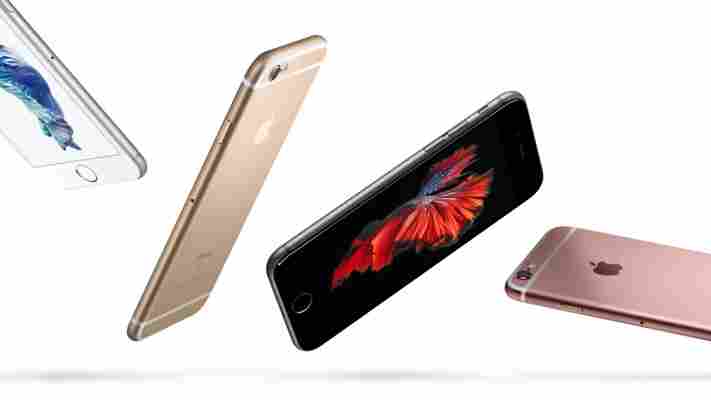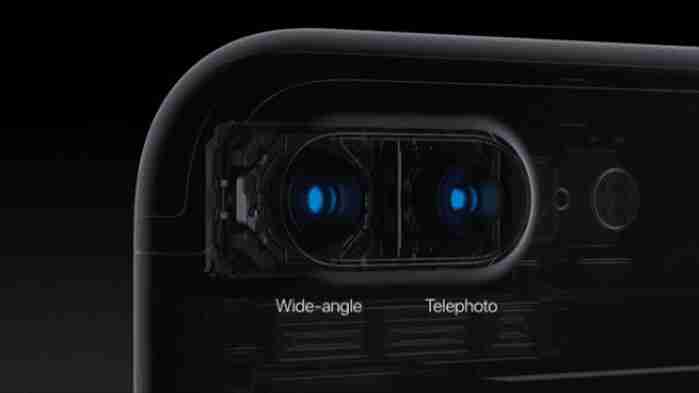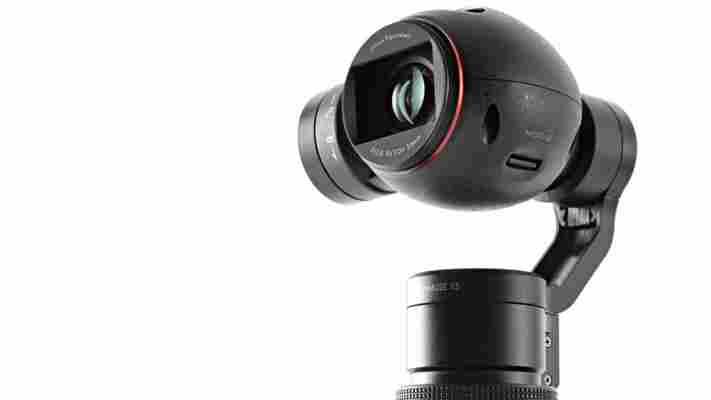Apple only updates its iPhone design every two years, so the intermediate ‘S’ models are normally not received quite as enthusiastically, despite their upgraded processing power. It looks like that may not be the case with the new 6s and 6s Plus , however.

Apple today told the Financial Times that sales of the 6s models are so far on pace to exceed the 10 million units moved during the first sales weekend of the preceding iPhone 6 units. The company says numbers have also exceed its own pre-order expectations, with the iPhone 6s currently showing up as completely sold out.
Somewhat strangely, Apple isn’t providing any specific numbers so far this time around – maybe it just wants to keep us on our toes.
That said, it’s likely that the larger number is a direct result of pre-orders opening in two new countries, including China.
In all, there are 12 launch countries this year. A more interesting comparison might be seeing how many units were moved relative to the launch numbers per country last year.
The iPhone 6s is arguably the largest ‘s’ upgrade to date, introducing a new pressure sensitive input mechanism for the series called ‘3D Touch,’ which will have large repercussions on the way iOS menus are designed and make the phone more appealing to power users.
The iPhone 6s also introduces a new 12-megapixel camera capable of shooting 4K video, the first time the megapixel count has been upgraded since the iPhone 4S in 2011. Meanwhile, both devices will ship with iOS 9, which introduces several multi-tasking features, improvements to Siri , and a taco emoji .
It’s also interesting that the Plus model sold out, given the smaller one has traditionally been more popular. While we don’t know how many units were in stock for each model, it could be an indication more Android users – who are accustomed to 5+ inch screens – are thinking of making the switch to iOS than before.
We’ll see how popular both devices are once they actually launch next weekend. In the meantime, Apple says it’s working to bring more 6s Plus models in stock online, and that both devices will be available in retail stores next Friday.
➤ Apple says new iPhone sales beat record [Financial Times]
iPhone 7 Cameras: Samples and everything you need to know
Apple is changing the ways you’ll take photos with the iPhone 7. While the smaller model includes fairly standard generational improvements, the iPhone 7 Plus brings some truly innovative features.

First, the more boring update. On the smaller model, there’s a wider F1.8 aperture and a six-element lens, shining on a larger sensor. Apple flaunted the sensor’s ability to take photos in low light in particular, which is a given the new hardware and finally including optical image stabilization on the smaller iPhone model.
Apple says it’s the best singular camera on any device yet – because course they do. But sample photos the company has uploaded do look quite nice:
Here’s a sample video demonstrating the image stabilization. The iPhone 7 shoots in 4k as before, but this time bumps up slow-mo video to 1080p:
These are all solid images, but taken by professional photographers. Colors look good and dynamic range looks decent, but it’s still very much a smartphone; I notice some muddy detail and clipped highlights.
Then again, those aren’t things the average user is likely to notice. More important may be that Apple is copying Microsoft’s excellent Pix app app to use some machine learning tricks to tune exposure and color around your subjects. This is powered by a new image signal processor (ISP) that lets the iPhone capture photos in as little as 25 milliseconds.
The iPhone 7 may end up being the best singular camera on an iPhone, but the 7 Plus is actually doing something much more exciting. It’s using a clever combination of hardware and software to achieve certain features normally only available to larger shooters like DSLRs or mirrorless cameras. It’s copying ideas started by HTC and Huawei, but taking them to a new level.
This is thanks to pairing a standard wide angle lens with a telephoto one. The first trick is combining optical ‘zoom’ with digital zoom.
There are quotes around the first ‘zoom’ because it’s really just having a second lens at a tighter focal length rather than actual zooming. Still, it’s much better than simply cropping the image like the zoom function on almost every other smartphone.
Tap once on the image, and the iPhone will switch to the telepoto lens. You can then pull a slider to use digital zoom up to 10x with less degradation than before thanks to the telefoto lens.
Now for the really interesting tidbit: Apple is also working on implementing shallow depth of field ( called it! ).
The Huawei P9, Honor 8, and HTC One M8 all beat apple to the punch, but Apple appears to be using a different implementation.
You can now enter a new Portrait mode to try out the shallow depth of field effects. The camera then uses machine learning in order to create a 3D depth mask of people’s faces, calculating how much to blur objects and subjects at different distances. It’s not clear if the iPhone 7 Plus is also combining both cameras to use parallax the way Huawei does, or if it creates a depth map purely via processing.
Whatever the technique, in the samples Apple showed, the photos looked much more believable than what I’ve been able to get from Huawei’s P9, and much closer to an image from my mirrorless camera. The camera seems to handle complicated edges with decent results; hair always proved a pain point in my time with the P9 and the earlier One M8, but the iPhone 7 handles it quite realistically at first glance in Apple’s controlled images.
The bokeh (a photography term for the way a camera renders out of focus areas) does look a bit too artificial; no real camera produces bokeh that smooth. But then, I’m not sure the average user will be able to tell the difference.
It’s also worth noting that Apple is calling it specifically a ‘portrait’ mode and only showed it being used on faces. It might be the company is not confident enough to try its hand at using shallow depth of field in other scenarios, again, perhaps because it relies heavily or solely on the machine learning aspect.
You get a live preview of the depth-of-field effect, too, but no word on if you can adjust focus after a shot has been taken, however.
If implemented effectively, portrait mode is going to be a game-changer for mobile photography. Shallow depth of field control is the most obvious differentiator of high-end camera rigs compared to smartphones. If Apple gets this right, along with the two focal lengths, it’s going to give a lot of pros and enthusiasts even more reason to leave their large rigs at home.
Unfortunately, you’ll have to wait for an update coming ‘later this year’ to try out the shallow depth-of-field features, as Apple is still working out some kinks.
On both cameras, the icing on the cake for pros will be the new RAW photography abilities, letting you pull greater detail and dynamic range for editing images.
The true-tone flash has been improved with four LEDs instead of two, able to put out 50 percent more light. Meanwhile, the front facing camera has been improved from 5 MP to 7 MP and includes deep trench isolation for sharper pictures and more accurate colors. The cameras can also now take photos in as little as 25 milliseconds.
While the iPhone 6 and 6 Plus were pretty much only differentiated by optical image stabilization, it seems this time Apple is positioning the larger device as the definitive superior shooter. We’ll have to wait and see how the devices shape up in the real world, but right now Apple looks poised to take the crown of best smartphone camera back from Android flagships like the Huawei P9 and Samsung’s 2016 devices.
Follow our coverage of Apple’s iPhone 7 keynote and find the latest stories about it here .
DJI launches new $650 4K handheld steadicam to make your movies as smooth as Hollywood’s
DJI might be best known in consumer circles for its drones , but the company has announced a new integrated camera and handheld stabilizer designed to make your footage as smooth as a pro’s.

Rather than design a fixed single-purpose unit, the Osmo comes with a 12-megapixel 4K camera but is also compatible with DJI’s Zenmuse cameras . The Osmo camera has 1/2.3″ sensor and a 94° field-of-view lens.
“With the Osmo, we have created a camera specifically designed to capture a smooth moving image regardless of filming conditions,” DJI’s CEO and founder Frank Wang said.
Controls built into the handle of the mount allow you to quickly change shooting angles, adjust settings and control ‘smart’ functions like panorama mode (the camera auto-pans 360° and stitches the images together for you), a long exposure mode and a slow motion setting that captures at 120 frames-per-second (fps) at a resolution of up to 1080p.
The handle also contains an integrated stereo mic, as well as a 3.5mm audio jack for professional audio capture.
Alongside the mount and camera, there’s a range of accessories that work with the Osmo, including a tripod, extension rod, bike mount, a straight arm extension for mounting two accessories to the Osmo at once and a universal mount that allows you to add a mic or LED light.
If the handle sounds appealing, but you already have a Zenmuse X3, a Zenmuse X5 Pro or a Zenmuse X5 Raw, DJI says you’ll be able to buy the handle on its own, but hasn’t provided a standalone price as yet.
The full Osmo unit is available to pre-order from now priced at $649/£549 and will start shipping on October 15.
